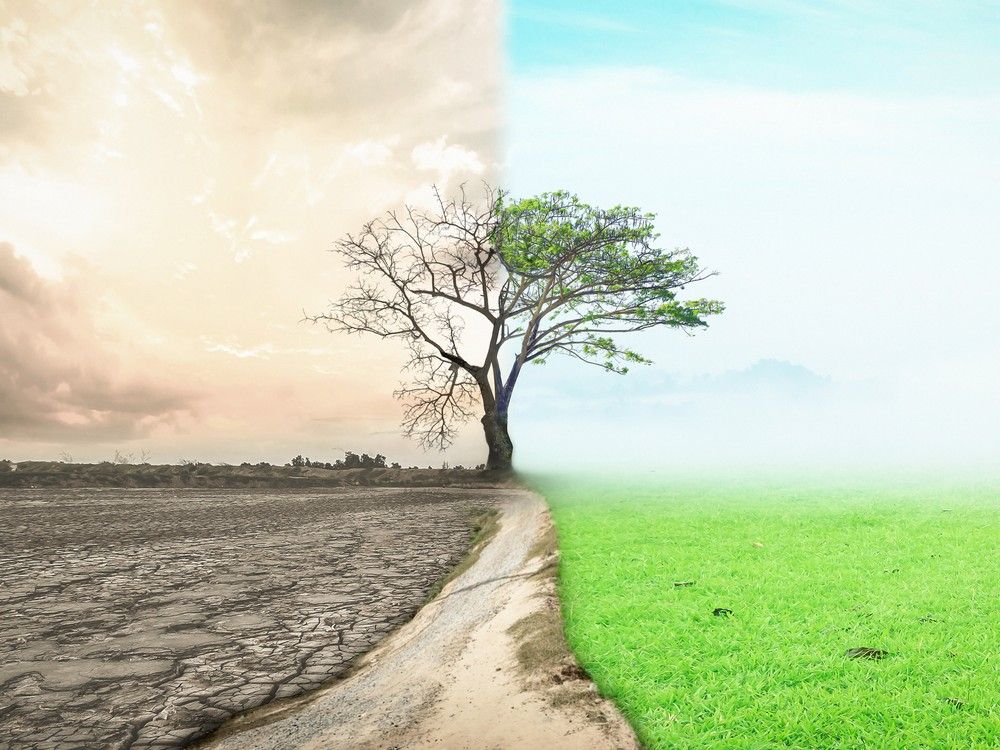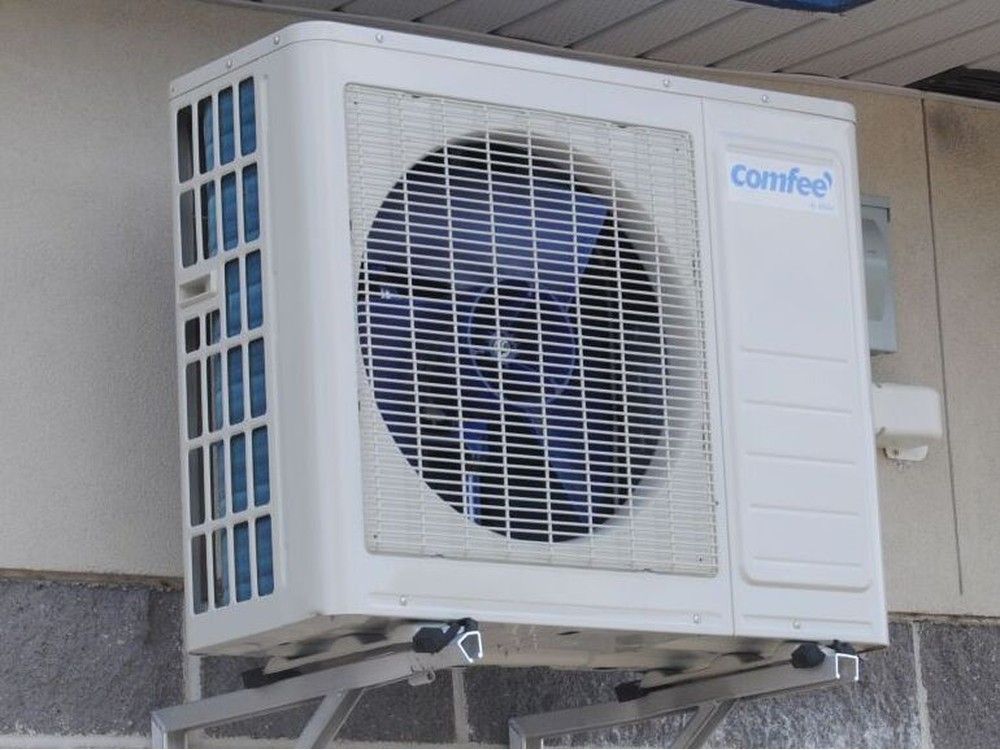
Here’s the latest news concerning climate change and biodiversity loss in B.C. and around the world, from the steps leaders are taking to address the problems, to all the up-to-date science.
Check back every Saturday for more climate and environmental news or sign up for our Climate Connected newsletter HERE.
In climate news this week:
• Gitanyow chiefs tell B.C. court LNG project threatens salmon rights
• Major nations agree on first global fee on greenhouse gases that targets shipping
• Signs of drought in B.C.’s latest snow, water supply bulletin
• B.C. expands heat-pump program for low-income residents to include suites in apartments but quietly scraps rebates for majority
Human activities like burning fossil fuels and farming livestock are the main drivers of climate change, according to the UN’s intergovernmental panel on climate change. This causes heat-trapping greenhouse gas levels in Earth’s atmosphere, increasing the planet’s surface temperature.
The panel, which is made up of scientists from around the world, has warned for decades that wildfires and severe weather, such as B.C.’s deadly heat dome and catastrophic flooding in 2021, would become more frequent and intense because of the climate emergency. It has issued a code red for humanity and warns the window to limit warming to 1.5 C above pre-industrial times is closing.
According to NASA climate scientists, human activities have raised the atmosphere’s carbon dioxide content by 50 per cent in less than 200 years, and “there is unequivocal evidence that Earth is warming at an unprecedented rate.”
As of March 14, 2025, carbon dioxide in the atmosphere has risen to 427.09 ppm parts per million, up from 426.65 ppm last month, according to NOAA data measured at the Mauna Loa Observatory, a global atmosphere monitoring lab in Hawaii. The NOAA notes there has been a steady rise in CO2, from over 421 ppm one year ago and less than 320 ppm in 1960.

Climate change quick facts:
• The Earth is now about 1.3 C warmer than it was in the 1800s.
• 2024 was hottest year on record globally, beating the record in 2023.
• The global average temperature in 2023 reached 1.48 C higher than the pre-industrial average, according to the EU’s Copernicus Climate Change Service. In 2024, it breached the 1.5 C threshold at 1.55 C.
• The past 10 years (2015-2024) are the 10 warmest on record.
• Human activities have raised atmospheric concentrations of CO2 by nearly 49 per cent above pre-industrial levels starting in 1850.
• The world is not on track to meet the Paris Agreement target to keep global temperature from exceeding 1.5 C above pre-industrial levels, the upper limit to avoid the worst fallout from climate change including sea level rise, and more intense drought, heat waves and wildfires.
• On the current path of carbon dioxide emissions, the temperature could increase by as much 3.6 C this century, according to the IPCC.
• In April, 2022 greenhouse gas concentrations reached record new highs and show no sign of slowing.
• Emissions must drop 7.6 per cent per year from 2020 to 2030 to keep temperatures from exceeding 1.5 C and 2.7 per cent per year to stay below 2 C.
• There is global scientific consensus that the climate is warming and that humans are the cause.
(Source: United Nations IPCC, World Meteorological Organization, UNEP, NASA, climatedata.ca)
Latest News
Gitanyow chiefs tell B.C. court LNG project threatens salmon rights
A proposed Northern B.C. liquefied natural gas project threatens vital salmon habitat and Gitanyow cultural practices and economic opportunities, Gitanyow hereditary chiefs argued recently in B.C. Supreme Court.
They told the court that the provincial government’s decision to exclude Gitanyow from consultations on the building of the LNG project violates their rights.
The chiefs are seeking to overturn a decision by the B.C. Environmental Assessment Office that didn’t include the Gitanyow in discussions about the proposed Ksi Lisims LNG project, which would be built at the mouth of the Nass River.
This is critical salmon habitat for chinook salmon, a species already at risk. An LNG terminal would disrupt delicate salmon habitats the Gitanyow rely on for food and cultural practices, the chiefs argued.
Ksi Lisims is jointly proposed by Rockies LNG Limited Partnership, Texas-based Western LNG LLC and the Nisga’a Lisims Government.
—Sonal Gupta

Major nations agree on first global fee on greenhouse gases with plan that targets shipping
Many of the world’s largest shipping nations decided on Friday to impose a minimum fee of $100 for every ton of greenhouse gases emitted by ships above certain thresholds, in what is effectively the first global tax on greenhouse gas emissions.
The International Maritime Organization estimates $11 billion to $13 billion in revenue annually from the fees, with the money to be put into its net zero fund to invest in fuels and technologies needed to transition to green shipping, reward low-emission ships and support developing countries so they aren’t left behind with dirty fuels and old ships.
The thresholds set through the agreement will get more strict over time to try to reach the IMO’s goal of net zero across the industry by about 2050.
The agreement, reached with the U.S. notably absent, is expected to be formally adopted at an October meeting to take effect in 2027. The IMO, which regulates international shipping, also set a marine fuel standard to phase in cleaner fuels.
—The Associated Press

Signs of drought in B.C.’s latest snow, water supply bulletin
B.C.’s snowpack increased slightly throughout March, but the average is still just 79 per cent of what’s considered normal and the province is sounding the alarm about the potential for drought.
The latest provincial snow survey and water supply bulletin says the snowpack is higher than April 1, 2024, when the average was 63 per cent of normal.
Still, the bulletin says the low snowpack and freshet forecasts combined with warm weather expected in the coming season and the “lingering impacts” of long-term drought point toward a risk of drought this spring and summer.
It says spring freshet hazards are expected to be reduced, though pockets in southern areas of the Okanagan, Boundary and West Kootenay regions have somewhat elevated snow levels that carry a risk of flooding.
The average snowpack was just 45 per cent of normal along the central coast, while it was at 94 per cent for western parts of the upper Fraser River basin.
The bulletin says that seasonal weather forecasts from Environment Canada in late March indicate a greater likelihood of above-normal temperatures for B.C. through to June.
—The Canadian Press
B.C. leaders and UBC design new science degree in Indigenous land stewardship, a first in Canada
UBC student Drew Brown’s undergraduate study has been a journey that started as a boy in Bella Bella’s Heiltsuk First Nation territory, the gateway to B.C.’s Great Bear Rainforest.
He spent a lot of time camping by the river in that rainforest, learning ceremonial songs and dances from elders and family members. It was there that he found a calling: m̓ṇúxvit, meaning to become one.
“It was a place where culture and ecology came together,” he said. “I didn’t know it then, but I was learning about the land stewardship from an Indigenous world view. And over time, I began to understand that land is not just a physical space. It’s also law, governance and the foundation of our self-determination.”
Brown, 36, is one of the first students to be part of a new science degree co-developed by Indigenous leaders and UBC’s faculty of forestry called a bachelor of Indigenous land stewardship.
The bachelor of Indigenous land stewardship, or BILS, is a first-of-its-kind program in Canada that will be part of a globally recognized standard for environmental management by 2050, according to UBC.
The university says it blends Indigenous science and western environmental management approaches and is open to Indigenous and non-Indigenous applicants.
—Tiffany Crawford
La Nina exits after three weak months, leaving Earth in neutral climate state
See you later La Nina, we hardly knew you.
La Nina, the natural cooling flip side of the better known and warmer El Nino climate phenomenon, has dwindled away after just three months. The La Nina that appeared in January, months later than forecast, was a weak one, the National Oceanic and Atmospheric Administration said Thursday.
Earth is now in a neutral setting in the El Nino Southern Oscillation cycle, which is generally the most benign of the three states that help influence hurricane formation, droughts, floods and global temperatures. NOAA forecasts the neutral setting to last most if not all of 2025. That makes longer-term weather forecasts a bit trickier because one of the major factors is not pushing one way or the other.
La Nina is an irregular rising of unusually cold water in a key part of the central equatorial Pacific that changes weather patterns worldwide. It typically brings more Atlantic hurricanes in the summer, but it won’t be a factor this year. In the U.S., La Ninas tend to cause drier weather in the South and West and often make it wetter in parts of Indonesia, northern Australia and southern Africa.
—The Associated Press

B.C. expands heat pump program for low-income residents to include suites in apartments but quietly scraps rebates for majority
B.C. is expanding the heat pump program that helps low and moderate income households, including renters, switch to electricity to heat and cool their homes.
But the province has also quietly scrapped the up to $3,000 in rebates for a ductless mini-split heat pump for residents who earn too much to meet the income thresholds.
Adrian Dix, B.C.’s minister of energy and climate solutions, announced Wednesday that later this year the energy saving program will expand to include units in multi-residential buildings.
But missing from the announcement was that the province cut the better homes rebate aimed at converting from natural gas, oil, wood or propane to an all-electric heat pump, effective on Friday.
The government didn’t provide any notice to contractors, said Stephen Lake, so-founder of Jetson Home Inc.
He said the energy-saver program for low-income households does not cover most households in the province, especially in the Lower Mainland where most detached homes and many townhouses and condos are valued at more than what is allowed under the threshold required to apply for rebates.
—Tiffany Crawford
Ottawa wants LNG Canada doubled, eyes TMX upgrade
The federal government supports doubling the scale of an already huge natural gas project on the West Coast and now sees it as “likely,” according to federal Energy Minister Jonathan Wilkinson, as the country pushes to diversify exports away from a hostile U.S.
The LNG Canada consortium, which includes Shell Plc and Petronas, is expected to send its first shipments of liquefied natural gas within months. Then the group will have to make a final investment decision on whether to proceed with a second phase.
LNG Canada represents tens of billions of dollars in spending and is one of the largest private sector projects in Canadian history. Phase 2 would double its capacity to 28 million tonnes a year. It’s important in Canada’s efforts to diversify trade, but it’s also important to fit it within the government’s “climate architecture,” Wilkinson said.
In one of his first speeches after becoming prime minister in March, Mark Carney said LNG Canada is a “project of national significance.”
—Bloomberg News